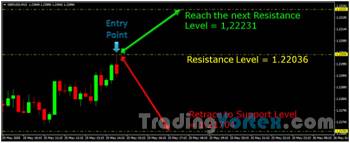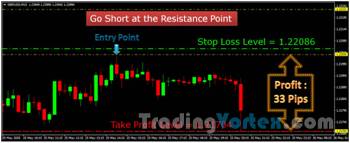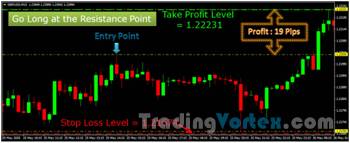Table Of Contents:
- Introduction to Trading Strategy Basics:
- Core Principles of a Successful Trading Strategy:
- Types of Trading Strategies:
- Building a Personalized Trading Plan:
- Mastering Trading Entry Techniques:
- Technical and Fundamental Analysis in Trading:
- Common Mistakes to Avoid in Trading:
- Adapting to Market Conditions:
- Advanced Tips to Enhance Your Trading Skills:
- Conclusion – Mastering Trading Strategy Basics for Long-Term Success:
Introduction to Trading Strategy Basics:
What Is a Trading Strategy and Why Is It Important?
If you’ve ever jumped into the trading world without a plan, you probably know what it feels like to drive a car without a steering wheel – chaotic, nerve-wracking, and almost certainly headed for disaster. A trading strategy is that steering wheel. It’s a carefully thought-out plan that outlines how, when, and why you’ll make your trades.
Think of it as your personal GPS for navigating the unpredictable world of financial markets. Without it, you’re just reacting to every market move like a cat chasing a laser pointer. A solid strategy helps you stay focused and make rational decisions, no matter how wild the market gets.
But why is it so critical? Because trading isn’t about luck – it’s about consistency. The markets can be unforgiving, and the moment you start "winging it," you’re opening the door to emotional trading (which is like gambling with a blindfold on). A trading strategy gives you the structure to act decisively and the confidence to stick to your plan, even when the market throws you a curveball.
How Trading Strategies Shape Investor and Trader Success?
Here’s the truth: no two traders are alike. Some thrive on adrenaline and gravitate toward fast-paced strategies like scalping, while others prefer the slower, steadier approach of position trading. What they all have in common, though, is that they rely on strategies tailored to their goals, risk tolerance, and trading style.
Let me share a quick story. Back in the early days of my trading career, I was all over the place – one day chasing breakouts, the next day hunting for reversals, with zero consistency. I called it “exploration,” but honestly, it was chaos. The turning point came when I sat down, reviewed my trades, and noticed that my best decisions had all come from using one specific method. That’s when I realized the power of focusing on a strategy that works for you and sticking with it.
Having a clear strategy isn’t just about making better trades; it’s about saving your mental energy. When you’ve got a game plan, you’re not second-guessing yourself all the time. You know exactly what to look for and when to act. And that’s where success starts – clarity, consistency, and control.
At the end of the day, a well-defined trading strategy doesn’t just shape your trades – it shapes you as a trader. It builds discipline, sharpens your decision-making, and sets you up for long-term growth. So, whether you’re just getting started or looking to refine your approach, remember this: a great strategy isn’t just about the market. It’s about knowing yourself and crafting a plan that turns your unique strengths into profits.
Trading isn’t easy, but having a strategy makes it a lot less stressful – and way more rewarding. Trust me on this one.
Core Principles of a Successful Trading Strategy:
Understanding Market Trends and Price Action:
Let’s face it: the market has a personality – sometimes predictable, sometimes erratic, and occasionally downright moody. If you want to trade successfully, you need to learn how to “read the room,” and that starts with understanding market trends and price action.
Think of trends as the lifeblood of the market. They’re the overarching direction the market (or a specific asset) is moving – up, down, or sideways. And while it may sound simple, identifying trends isn’t always straightforward. One minute it looks like the price is soaring, and the next, it’s nosediving faster than your confidence after a bad trade.
This is where price action comes in. Price action is like the market’s body language – it tells you what’s really happening beneath the surface. By analyzing candlestick patterns, support and resistance levels, and momentum, you can start to decode what the market is trying to tell you.
Here’s a tip: trends are your friends until they end. If you see a strong uptrend, you don’t want to fight it by trying to short the market. Ride the wave, but always be ready to pivot when the signals change. And remember, the market doesn’t owe you an explanation, so stay humble and flexible.
The Role of Risk Management in Trading Strategy Basics:
I can’t stress this enough – risk management isn’t just a principle; it’s your lifeline in trading. No matter how good your strategy is, there will be losses. The key is to make sure those losses don’t wipe you out.
Here’s how I think of it: imagine you’re sailing a ship. Risk management is the watertight hull that keeps you afloat when the storm hits. Without it, even the smallest leak can sink you.
Start by determining how much of your capital you’re willing to risk on a single trade – most seasoned traders stick to 1-2%. This way, even if you hit a losing streak (and you will), you’ll have plenty of ammo left to recover.
Another critical part of risk management is setting stop-loss orders. I know, I know – sometimes it feels like the market loves hitting your stop just before reversing in your favor. But trust me, stops aren’t your enemy; they’re your safety net. A well-placed stop-loss protects you from catastrophic losses and forces you to reevaluate your trade objectively.
Lastly, diversify your portfolio. Putting all your eggs in one basket might feel bold, but it’s a recipe for disaster. Spread your investments across different assets or markets to minimize your exposure to any single point of failure.
Psychological Discipline – The Key to Trading Success:
Here’s the thing about trading: it’s as much a mental game as it is a technical one. If you don’t have the right mindset, even the best strategy in the world won’t save you.
Take emotions, for instance. Fear and greed are the two biggest culprits that derail traders. Fear makes you exit trades too early, while greed convinces you to hold on too long or overleverage yourself. The result? Missed opportunities and unnecessary losses.
One of the hardest lessons I learned early on was to separate my emotions from my trades. I still remember my first big loss – it wasn’t just the money that stung; it was the emotional rollercoaster. I made impulsive decisions trying to “win it back,” and spoiler alert: it didn’t end well. That experience taught me the value of discipline and sticking to my plan, no matter what.
A good way to build discipline is by keeping a trading journal. Write down your reasons for entering and exiting every trade, along with your thoughts and feelings. Over time, you’ll start to see patterns in your behavior – both good and bad. The goal is to learn from your mistakes and reinforce positive habits.
Another pro tip? Take breaks. Staring at charts for hours on end can cloud your judgment. Sometimes the best trade you can make is to step away from the screen, clear your head, and come back with fresh eyes.
By mastering these core principles – reading trends, managing risk, and cultivating psychological discipline – you’ll set a strong foundation for long-term success in trading. The market may be unpredictable, but with these tools in your arsenal, you’ll be better equipped to navigate its ups and downs with confidence and clarity.
Types of Trading Strategies:
When it comes to trading strategies, there’s no “one-size-fits-all” solution. Choosing the right approach depends on your personality, goals, and tolerance for risk. Think of it like choosing a car: some people love the thrill of a race car, while others prefer the reliability of a family SUV. Let’s break down three popular types of trading strategies to help you figure out what fits your style.
Day Trading vs. Swing Trading – Key Differences and When to Use Them:
Day trading and swing trading are like two siblings with completely different temperaments. Both have their merits, but they cater to very different types of traders.
Day Trading is all about adrenaline. You’re buying and selling within the same day, sometimes holding positions for just minutes or hours. The goal? Capitalize on short-term market movements and walk away flat at the end of the day (no overnight positions here). Day trading is fast-paced, requires laser focus, and demands a lot of screen time. It’s like running a sprint – intense, quick, and not for the faint-hearted.
But here’s the catch: it’s not as glamorous as the movies make it seem. It’s hard work. You need a solid understanding of technical analysis, and you better love staring at charts because they’ll become your best friends (and maybe your worst enemies). The rewards can be high, but so is the risk, so be prepared to commit.
Swing Trading, on the other hand, is like a long weekend road trip. It’s slower, more strategic, and allows you to hold positions for days or even weeks. This strategy is ideal if you don’t want to be glued to your screen all day but still want to capitalize on short- to medium-term price movements.
Swing trading works well if you have a knack for spotting trends and can stomach holding positions overnight (and through some potentially nerve-wracking news cycles). It’s a great middle-ground for traders who want to balance activity with a bit of breathing room.
Scalping Strategies – A High-Speed Approach to Profits:
If day trading feels fast-paced, scalping is like day trading on caffeine. Scalpers aim to profit from tiny price movements, often entering and exiting trades within seconds or minutes. The idea is simple: stack up small, consistent wins that add up over time.
When I first tried scalping, I learned the hard way that hesitation is the enemy. In this game, you don’t have time to second-guess yourself. You see an opportunity, you take it, and you move on – no lingering, no emotional attachment.
But let me be real with you: scalping isn’t for everyone. It can be exhausting and stressful, and transaction costs can eat into your profits if you’re not careful. However, if you thrive in high-pressure situations and love the thrill of rapid trades, scalping might be your calling.
Position Trading – Long-Term Strategies for Consistent Growth:
Position trading is the polar opposite of scalping. If scalping is a sprint and swing trading is a road trip, then position trading is a cross-country journey. It’s about playing the long game – holding positions for months or even years to ride major market trends.
This strategy is great if you have a full-time job or simply don’t want to spend your days staring at charts. Position trading gives you the freedom to step back, let your investments breathe, and focus on the long-term payoff.
One of my mentors, a seasoned position trader, once told me: “The market rewards those who can wait.” And he wasn’t wrong. If you’re willing to trust the process and let your investments mature, position trading can be incredibly rewarding – not just financially but also for your peace of mind.
At the end of the day, the best trading strategy is the one that fits your lifestyle, personality, and goals. Whether you’re in it for the adrenaline rush or the long-term rewards, understanding these types of strategies is the first step to finding your perfect match. Remember, trading isn’t about mimicking someone else’s success – it’s about carving out your own path. Choose wisely, and trade smarter.
Building a Personalized Trading Plan:
If you’ve ever tried assembling furniture without instructions, you know how quickly things can go sideways. Trading is no different. A personalized trading plan is your step-by-step guide to navigating the markets with purpose and confidence. It’s not about following someone else’s blueprint – it’s about crafting a plan tailored to your unique goals, style, and circumstances. Let’s dive into the essentials of building one.
Setting Clear Financial Goals – The Foundation of a Good Trading Strategy:
Before you make a single trade, ask yourself: What am I hoping to achieve? Are you trading to build wealth over the long term, generate a steady side income, or hit that dream vacation fund? Your financial goals will shape every aspect of your trading plan.
Here’s the deal: vague goals like “make money” won’t cut it. Instead, set clear, measurable objectives. For example:
- Earn a 10% annual return on your trading account.
- Generate $500 per month in additional income.
- Limit your losses to no more than 2% of your account per trade.
I’ll let you in on a little secret: realistic goals are your best friend. When I first started trading, I had visions of turning $1,000 into $100,000 overnight (spoiler alert: that didn’t happen). It wasn’t until I set smaller, achievable goals that I started to see real progress.
Your goals will also determine your approach. If you’re looking for steady growth, you might lean toward position trading. If you’re chasing faster results and can commit the time, day trading might be a better fit. Whatever you choose, make sure your goals align with your risk tolerance and lifestyle.
Selecting the Right Tools and Platforms for Effective Trading:
Imagine trying to build a house without proper tools – it’s not going to end well. The same goes for trading. Your tools and platforms are the foundation of your success, so choose wisely.
Start with a reliable trading platform. Look for one that offers the features you need: real-time charts, a user-friendly interface, low fees, and access to the markets you want to trade. If you’re into forex, for example, a specialized forex broker might be ideal. For stocks, platforms like Thinkorswim or Interactive Brokers are worth exploring.
And let’s not forget about your hardware. A good computer (or even a dual-monitor setup) and a stable internet connection are non-negotiable. You don’t want your screen freezing during a big trade – it’s the trading equivalent of being caught in a traffic jam on the way to an important meeting.
One tool I swear by is a trading journal. It doesn’t have to be fancy – a simple spreadsheet works. Use it to track your trades, including your entry and exit points, reasons for entering, and outcomes. Over time, this becomes a goldmine of insights into what’s working and what isn’t.
How to Backtest and Optimize Your Strategy:
Here’s where the magic happens: backtesting. This is the process of testing your trading strategy against historical data to see how it would have performed. It’s like running a rehearsal before the big show.
To get started, choose a market and time frame that matches your strategy. Then, go back and simulate trades based on your criteria. For example, if your strategy involves buying when a stock hits its 50-day moving average, look at past charts and see what would have happened. Did the price go up? Did it tank? Take notes.
The goal here isn’t to cherry-pick the best results – it’s to identify patterns and refine your strategy. If you notice consistent losses in certain market conditions, adjust your approach. Maybe your stop-loss is too tight, or your entry signals need tweaking.
When I first backtested one of my strategies, I felt like a scientist in a lab, tweaking variables and watching for breakthroughs. It took time, but the process gave me a level of confidence I never had before. There’s something incredibly reassuring about knowing your strategy has a track record – even if it’s just on paper.
Once you’re satisfied with your backtest results, move on to forward testing in a demo account. This step is crucial: it lets you practice your strategy in real market conditions without risking real money. Only after you’ve honed your plan in a demo environment should you consider going live.
Building a personalized trading plan isn’t a one-and-done task. It’s a living, breathing document that evolves as you grow as a trader. By setting clear goals, equipping yourself with the right tools, and testing your strategy thoroughly, you’ll be well on your way to navigating the markets with confidence. Remember, the best plan isn’t the fanciest one – it’s the one you can stick to, day in and day out. So take your time, refine your approach, and trust the process. You’ve got this.
Mastering Trading Entry Techniques:
Trading entry techniques are often the unsung heroes of a successful strategy. You can have the best plan in the world, but if your timing is off when you enter the market, it’s like trying to jump onto a moving train – you might make it, but there’s a good chance you’ll stumble. This section is all about mastering the art of entry points so you can step into trades with confidence and precision.
What Are Trading Entry Techniques and Why Do They Matter?
Think of it like fishing. You don’t just throw your line into the water randomly – you watch for ripples, time your cast, and wait for the perfect moment to reel in your catch. Similarly, in trading, your entry technique is about waiting for the right conditions to align. Without one, you’re essentially trading blind, and that’s a recipe for frustration (and probably losses).
Key Entry Signals for Successful Trades:
There are several ways to approach market entry, and no single method is “best.” The right one depends on your strategy, risk tolerance, and trading style. Here are some tried-and-true techniques:
Breakout Entries – Identifying and Capitalizing on Market Breakouts:
Breakouts are like spotting a herd of wild horses about to bolt – you see the buildup, anticipate the action, and position yourself to ride the momentum. A breakout happens when the price breaches a significant support or resistance level, signaling the potential for a strong move in that direction.
Pullback Entries – Timing the Market During Corrections:
Pullbacks are like taking advantage of a sale in a luxury store. The price dips temporarily during a strong trend, giving you a golden opportunity to buy in before the trend resumes. It’s one of the safest and most strategic ways to enter a trade.
Trend-Following Entries – Leveraging Momentum for Precision:
As the saying goes, “The trend is your friend.” Trend-following entries are all about joining the party when the market is already dancing in a particular direction. You’re not trying to predict the trend – you’re simply hopping on board once it’s confirmed.
One effective method for trend-following is using moving averages. For instance, when the 50-day moving average crosses above the 200-day moving average (the “Golden Cross”), it’s often a strong buy signal. This method isn’t flashy, but it’s reliable. As a trend follower myself, I’ve found this approach to be a steady workhorse in my trading toolkit.
Using Indicators to Perfect Entry Points:
Indicators are like your co-pilot in trading – they won’t make the decisions for you, but they’ll give you the data you need to make smarter choices. Here are three popular tools to enhance your entry timing:
- Moving Averages: Great for identifying trends and key levels. Use shorter timeframes for faster signals or longer ones for more reliability.
- RSI (Relative Strength Index): Ideal for spotting overbought or oversold conditions. If RSI is below 30, the market may be oversold – a potential buy signal.
- Fibonacci Levels: Traders swear by these retracement levels for identifying pullback zones. Look for the 38.2%, 50%, and 61.8% levels to time your entries during corrections.
Combining these indicators can provide even stronger signals. For example, if a pullback hits both a Fibonacci level and a moving average, that’s a confluence – a signal worth paying attention to.
Common Mistakes to Avoid When Entering a Trade:
No matter how skilled you are, mistakes happen. The good news? You can avoid most of them with a little awareness and discipline. Here are some common pitfalls to watch out for:
- FOMO (Fear of Missing Out): Jumping into a trade just because the market is moving fast is a surefire way to lose money. Take a breath, analyze the setup, and stick to your plan.
- Ignoring Confirmation: Always wait for confirmation signals before entering. Acting on “gut feelings” alone can lead to unnecessary losses.
- Overleveraging: Don’t let greed cloud your judgment. Keep your position size in check and ensure your risk is manageable.
- Not Accounting for Slippage: In fast-moving markets, your actual entry price might differ from your intended one. Factor this in when planning trades.
- Skipping the Plan: The biggest mistake is entering without a defined plan. Know your entry, stop-loss, and take-profit levels before placing the trade.
Mastering trading entry techniques takes time, practice, and a bit of trial and error. But once you get the hang of it, you’ll find yourself entering trades with more confidence and less stress. Remember, the goal isn’t to be perfect – it’s to be consistent. So take your time, learn from your mistakes, and keep refining your approach. The markets will reward your patience and discipline.
Trading Entry Example:
Let’s look at a chart now and see how these entry points might be accomplished. We can use any time frame for these entry strategies and any currency pair for the important point is that we trade in the same way whatever the asset.
The GBP/USD 15 minute Chart Example:
The chart below shows that the price action has hit a known resistance level at 1.22036 (blue arrow). We know that there is a support level at 1.21704, so we have two possibilities:
- The price could retrace to this support level (1.21704).
- Or, the market is gaining strength and will break new highs in the future to reach the next resistance level (1,22231).
We can therefore, depending on what other indicators suggest:
- Go short at the resistance point at the 1.22036 price.
- Go long at the resistant point with a view to it breaking to a new high.
Supposing that our favorite indicators suggest that the price will retrace so we open a short position:
- Our take profit will at the first known support: 1.21704.
- Our stop loss for the sell position should have been placed just above the last significant top which was 1.22086.
Outcome : The price retraced to the support area (to the 1.21704 price) and we made a profit of 33 Pips.
- Profit: 1,22036 - 1,21704 = 0,00332 ⇔ +33,2 Pips.
- Risk: 1,22036 - 1.22086 = -0,0005 ⇔ -5 Pips.
- We risked only 5 pips to gain 33 pips which was a nice risk/reward ratio of 1:6.
However, if we had taken a long position at the resistance point of 1.22036 we would still have had a successful trade as long as:
- We had kept in the trade until it had rebounded from the support level (1,21704) and moved up to 1.22231 where the take profit should be placed .
- Our stop loss for a buy trade should have been placed 3 Pips below this support level (1.21704 + 0,0003 = 1,21674).
For the Long position the Outcome will be:
- Profit: 1.22231 - 1.22036 = 0,00195 ⇔ +19,5 Pips.
- Risk: 1,21674 - 1.22036 = -0,00362 ⇔ -36,2 Pips.
- The riskier trade was the Buy because we risked 36 pips to gain 19 pips (2:1 risk/reward ratio) and that is a bad ratio.
Technical and Fundamental Analysis in Trading:
If trading were a coin, technical and fundamental analysis would be its two sides. Each approach brings its unique flavor to the table, and while some traders swear by one over the other, the magic often happens when you find a balance. Let’s dive into the nuts and bolts of both methods and how they can supercharge your trading strategy.
The Role of Technical Analysis in Trading Strategy Basics:
Technical analysis is like being a detective in the market. Instead of focusing on company earnings or economic reports, you’re analyzing the price itself. It’s all about patterns, trends, and historical data. Think of it this way: the price chart is a story, and technical analysis helps you read between the lines.
Why is this important? Because price movements often repeat themselves. Markets are driven by human behavior, and humans are nothing if not predictable – at least some of the time. Technical analysis helps you identify those patterns and use them to make informed decisions.
For instance, imagine spotting a “double-bottom” pattern – a classic signal that the price is about to reverse upward. It’s like finding a treasure map on the chart. I can’t tell you how many times I’ve spotted one of these patterns, entered a trade, and watched it play out exactly as the charts predicted. It’s moments like those that make all the late-night charting sessions worth it.
Key Technical Indicators Every Trader Should Know:
If technical analysis is your toolbox, indicators are your tools. While there’s no shortage of flashy indicators out there, you don’t need to overload your charts with a dozen of them. Here are a few workhorses that every trader should get familiar with:
- Moving Averages: Simple yet effective. Moving averages smooth out price data to help you spot trends. The 50-day and 200-day moving averages are especially popular for identifying long-term trends and crossovers.
- Relative Strength Index (RSI): Think of RSI as your market mood ring. It tells you whether a stock or currency is overbought or oversold. If the RSI is above 70, it might be time to sell. Below 30? A buying opportunity could be on the horizon.
- MACD (Moving Average Convergence Divergence): Don’t let the name intimidate you. MACD is like your trend compass, showing you momentum and potential reversals with its crossovers and histogram.
- Bollinger Bands: These are like a visual boundary for price movement. When prices hit the outer bands, it could signal a reversal or a breakout – kind of like a pressure cooker about to release steam.
Pro tip: Don’t use every indicator under the sun. Focus on a few that align with your strategy and learn to use them well. Trust me, I’ve been down the rabbit hole of indicator overload – it’s not pretty.
Combining Fundamental Analysis with Your Strategy:
While technical analysis focuses on what’s happening on the charts, fundamental analysis digs into the “why.” It’s like being a market archaeologist, uncovering the economic, financial, and geopolitical factors driving price movements.
Fundamental analysis might involve examining a company’s earnings report, keeping an eye on interest rate decisions, or analyzing global events that impact commodities. For example, if OPEC announces production cuts, oil prices often respond accordingly. As a trader, knowing the “why” behind those movements can give you an edge.
Here’s the real secret sauce: combining technical and fundamental analysis. This hybrid approach lets you see the big picture while still timing your trades with precision. For example:
- Use fundamental analysis to identify opportunities. Let’s say you believe a tech company is undervalued based on its earnings report.
- Then, use technical analysis to time your entry. Wait for a pullback to a key support level or a breakout above resistance before jumping in.
I once traded gold during a period of rising inflation fears. The fundamentals screamed “buy,” but I waited for a technical confirmation – a breakout above a key resistance level – before entering. That trade turned out to be one of my most profitable, and it’s a lesson I’ve carried with me ever since.
Why Balance is Key:
Here’s the thing: no single method works in isolation. Relying solely on technical analysis can blind you to critical market drivers, while focusing only on fundamentals might leave you mistiming your trades. The goal is to let the two approaches complement each other.
Think of it like cooking. Fundamental analysis gives you the raw ingredients, and technical analysis tells you how to cook them. Together, they create a recipe for success.
Mastering both technical and fundamental analysis takes time and practice, but the rewards are worth it. These tools help you trade smarter, not harder. Remember, the market is a dynamic and ever-changing beast. By staying informed and adaptable, you’ll set yourself up for long-term success. And hey, if you ever feel overwhelmed, just remember: even the best traders started out as rookies staring at confusing charts. Keep learning, stay curious, and trust the process – you’ve got this.
Common Mistakes to Avoid in Trading:
Trading can feel like a high-stakes game at times. The market moves fast, emotions run high, and it’s easy to make missteps – even for seasoned traders. But here’s the good news: every mistake is a chance to learn. To save you some pain (and capital), let’s dive into the common pitfalls that traders face and, more importantly, how to avoid them.
Overtrading and Emotional Decisions – Pitfalls to Watch Out For:
Let me tell you about my first year of trading: it was a rollercoaster. I’d trade anything that moved, chasing every shiny setup without a solid plan. That’s called overtrading, and it’s one of the quickest ways to burn through your account.
Overtrading often stems from two things: boredom and greed. You see a few green trades and suddenly feel invincible. Or worse, you’ve had a string of losses, and you’re desperate to “make it all back.” Either way, it’s your emotions driving the ship, not your strategy.
Here’s a simple mantra: trade less, but trade smarter. Quality over quantity is the name of the game. Stick to setups that align with your strategy, and don’t let FOMO (fear of missing out) lure you into trades that don’t fit. Remember, it’s okay to sit on the sidelines. As one of my mentors used to say, “Sometimes the best trade is no trade.”
Ignoring Risk Management Principles in Trading Strategies:
This one’s a biggie. If you don’t respect risk, the market won’t respect you. It’s easy to focus on potential profits and forget about the flip side – how much you could lose. Trust me, I learned this lesson the hard way when I once risked half my account on a “sure thing.” Spoiler alert: it wasn’t a sure thing.
Risk management isn’t just important – it’s essential. Here are a few golden rules:
- Never risk more than you can afford to lose. This isn’t just about money; it’s about preserving your mental and emotional well-being.
- Stick to the 1-2% rule. Only risk 1-2% of your account on any single trade. This way, even a string of losses won’t wipe you out.
- Always use stop-loss orders. A stop-loss is your safety net, automatically closing your trade if the market moves against you. Set it, respect it, and don’t move it unless you have a sound reason.
Here’s a little perspective: trading isn’t about hitting home runs every time. It’s about staying in the game long enough to let your edge play out. Think of yourself as a marathon runner, not a sprinter.
Failing to Adapt Your Strategy to Changing Market Conditions:
Markets are like the weather – constantly changing. A strategy that worked beautifully last year might not work today. One of the biggest mistakes traders make is sticking rigidly to a plan that’s no longer effective.
Let’s say you’re a trend trader, and the market shifts into a choppy, sideways range. If you keep trading as if trends will magically reappear, you’re setting yourself up for frustration and losses. Adapting doesn’t mean abandoning your strategy entirely – it means tweaking it to suit the current environment.
Here’s an example from my trading journey: during periods of low volatility, I switch gears and focus on range-bound setups instead of chasing trends. It’s not glamorous, but it keeps me in sync with the market.
How do you stay adaptable?
- Keep a trading journal. Review your trades regularly to spot patterns and identify when your strategy might need adjusting.
- Stay informed. Pay attention to macroeconomic trends and market sentiment. Understanding the bigger picture can help you anticipate changes.
- Be willing to evolve. The best traders aren’t rigid — they’re flexible. Think of your strategy as a living, breathing entity that grows with you.
Final Thoughts – Avoiding Mistakes Is Part of the Journey:
Here’s the thing: you will make mistakes. Everyone does. The key is to learn from them and avoid repeating them. Trading is a skill, and like any skill, it takes time to develop.
So, if you’ve overtraded, ignored risk management, or stubbornly stuck to a failing strategy, don’t beat yourself up. Acknowledge the mistake, figure out what went wrong, and use it as a stepping stone to become a better trader.
And one last piece of advice: don’t compare your journey to others. Social media is full of traders flaunting their wins, but remember, no one posts their losses. Focus on your own growth, celebrate your progress, and remember why you started trading in the first place – whether it’s for financial freedom, the thrill of the challenge, or simply a love of the markets.
You’ve got this. Keep learning, keep adapting, and keep showing up. The markets reward those who persevere.
Adapting to Market Conditions:
As any experienced trader will tell you, the market is never static. It’s like a living, breathing entity – always shifting, evolving, and throwing curveballs when you least expect it. A strategy that works wonders in one market phase may be a disaster in another. So, if you want to be a successful trader, you have to learn how to adapt to different market conditions. But how do you do that?
Well, it’s all about staying flexible, staying informed, and recognizing the signs that the market is shifting. Let’s break it down.
How to Adjust Your Trading Strategy in Bull vs. Bear Markets:
One of the first lessons I learned in trading was this: the market is either bullish, bearish, or somewhere in between (and yes, there are plenty of in-between phases). If you’re trying to apply the same strategy across all market conditions, you’re setting yourself up for frustration. The best traders know how to spot the market’s mood and adjust accordingly.
How to Adjust Your Trading Strategy In a Bull Market:
A bull market is like a party – the mood is upbeat, prices are rising, and opportunities seem endless. In these conditions, momentum-based strategies work wonders. Think trend-following trades or swing trades that capture upward movements. The key is to be on the right side of the trend and ride it for as long as possible.
But even in a bull market, not everything is smooth sailing. As the market goes up, it often has short-term pullbacks. During these brief dips, consider using pullback entries to get in on the next leg of the rally. Patience is key here – don’t rush in just because everyone else seems to be making money. Stick to your plan and enter when the risk is right.
How to Adjust Your Trading Strategy In a Bear Market:
Now, bear markets can feel like the party’s over. Prices are falling, sentiment is low, and it seems like everyone is running for the hills. But here’s the thing: bear markets create opportunities for traders who know how to adjust. Instead of trying to fight the trend, focus on short-selling (if that’s part of your strategy) or even simply taking a step back and being more conservative with your entries.
In a bear market, you might consider trend-following strategies that focus on shorting stocks or assets that are in a downtrend. On the flip side, if you're a long-term investor, you can use these market conditions to identify undervalued opportunities. If you’re buying, make sure you’re being selective – only invest in high-quality assets that are likely to rebound when the market turns.
The major difference between a bull and bear market is psychology. In a bull market, people are willing to take more risks, often overleveraging themselves. In a bear market, fear dominates, and people tend to be more risk-averse. It’s crucial to understand this psychological shift because it influences everything from price movements to volume. As a trader, knowing how to read the room – whether the market is being overly greedy or overly fearful – will give you a huge advantage.
The Importance of Staying Updated on Market News and Events:
You can have the best strategy in the world, but if you don’t stay updated on what’s happening in the market, you might as well be trading blindfolded. Market news and events are like the weather – they shape everything. If you’re not keeping an eye on key economic reports, central bank policies, or geopolitical events, you could miss major shifts.
Here’s how to stay informed:
- Follow financial news outlets. Sources like Bloomberg, Reuters, and CNBC are invaluable for real-time updates on market-moving events. Sure, there’s a lot of noise, but if you know what to look for, it’s gold.
- Understand economic indicators. Key reports like GDP, unemployment numbers, inflation data, and interest rate changes have massive impacts on the markets. Familiarizing yourself with these will give you a leg up in anticipating market movements.
- Pay attention to earnings reports and earnings seasons. If you're trading individual stocks, earnings reports are a big deal. Positive or negative earnings surprises can move stocks dramatically, so it’s important to know when they’re coming up.
One of the best pieces of advice I’ve received over the years is to not trade in a vacuum. If you’re trading stocks, don’t just focus on the company’s fundamentals and technicals – look at the broader market and economic context too. A seemingly bullish stock can turn into a dud if broader economic conditions deteriorate. Likewise, a stock that looks like it’s in a downtrend might bounce back if the market sentiment shifts in its favor.
Final Thoughts – The Art of Adapting:
Here’s the bottom line: successful traders aren’t the ones who cling to one strategy. They’re the ones who know how to adjust, stay flexible, and roll with the punches. Markets change, and so must you. Don’t be afraid to tweak your approach based on what’s happening around you – whether that’s shifting from trend-following to range-trading in a sideways market or switching from a risk-on to a risk-off mentality during times of uncertainty.
So, next time you find yourself caught in a market shift, remember: adaptability is your superpower. Keep your strategies dynamic, your mind open, and your eyes on the market news. And above all, don’t be afraid to evolve as the market does.
Happy trading, and may the market be in your favor!
Advanced Tips to Enhance Your Trading Skills:
Alright, so you've mastered the basics of trading strategies, and you're feeling pretty confident about navigating the markets. But let’s be real: trading is a constant journey of learning, improving, and tweaking. Even seasoned traders know that there’s always something new to explore or a trick to master that can boost their edge. If you’re looking to take your trading game to the next level, then it’s time to dive into some advanced tips that can really set you apart from the pack. Grab a cup of coffee and let’s get into it!
Leveraging Automation – The Role of Trading Bots and Algorithms:
Alright, I’ll admit it: at first, I was skeptical about using trading bots. I thought, "No way can a bot know what’s going on in my head when I'm analyzing the market." But let me tell you, these little guys have been a game-changer.
Here’s how you can use automation to your advantage:
- Test your strategies. Before going all-in with a bot, backtest your strategies using historical data. The bot can run thousands of simulations to see how your strategy would have performed in various market conditions. This gives you a lot more confidence when implementing the strategy live.
- Set specific rules. Trading bots work best when they follow a clearly defined set of rules. Want to buy when a stock hits a certain moving average or sell when a certain RSI level is reached? The bot will handle that for you – no emotional second-guessing involved.
- Use it for routine tasks. While the bot can’t replace the need for solid decision-making and strategy, it can automate repetitive tasks, like taking profits at a certain percentage or setting stop-loss orders. This frees you up to focus on more complex decisions, like market sentiment or news events.
But here’s the catch: as much as bots can be helpful, they’re not infallible. Always monitor their performance, and don’t become too reliant on them. After all, the market can change in a heartbeat, and you don’t want a bot getting caught off guard by a sudden shift in direction. Use them as a tool, not a crutch.
Diversification – Managing Multiple Strategies for Better Returns:
"Don’t put all your eggs in one basket." It’s a timeless piece of advice, right? And it applies to trading as much as it does to investing. While it’s tempting to stick to just one strategy and pour all your energy into it, I’ve learned that the most successful traders are often those who diversify their approach.
When I started, I was fixated on one type of strategy – trend-following. And while it worked well during strong, trending markets, there were times when I’d get caught in choppy conditions. I found myself in a losing streak, all because my strategy was too rigid.
That’s when I realized I needed to broaden my approach. By using multiple strategies, you can hedge your bets against market fluctuations. For example:
- Trend-following strategies are great when the market is clearly going in one direction.
- Range-trading strategies can help you make profits when the market is flat or consolidating.
- Scalping can generate consistent, small wins during highly liquid periods,
- While swing trading can capitalize on short-to-medium term price movements.
Having multiple strategies in your arsenal gives you the flexibility to adapt to different market conditions. If one strategy is underperforming due to the market’s behavior, another might be thriving. It’s like having a toolbox instead of just one hammer – you’ll be prepared for any situation.
Just remember: don’t spread yourself too thin. Manage a few solid strategies that complement each other and work well together. And don’t forget to reassess your strategies regularly – what works today might not be as effective tomorrow. Stay on top of performance and tweak when necessary.
Learning from Experience – Analyzing and Improving Past Trades:
Here’s the thing: no matter how good you get, you’re still going to make mistakes. It’s part of the journey. But here’s the secret: don’t make the same mistake twice. One of the most powerful ways to enhance your trading skills is to consistently review and learn from your past trades.
I’m not just talking about reviewing the trades that worked. It’s easy to say, "I nailed that one!" when you catch a perfect breakout. But the real growth comes from reviewing the ones that didn’t work out as planned. The key is to ask yourself: Why did this trade fail? What could I have done differently?
Here's how you can approach this:
- Keep a trading journal. If you haven’t already, start writing down your trades – both the winners and losers. Include the trade’s context, your reasoning for entering, and what you were feeling at the time. Later, you can review this and spot patterns in your decision-making process, like overtrading or letting emotions dictate your actions.
- Evaluate your risk management. Look at your stop-loss levels, position sizing, and risk-to-reward ratios. Did you stick to your plan, or did you get sloppy with your risk management? Being brutally honest with yourself is essential to becoming a better trader.
- Analyze your mental state. Trading psychology is everything. Were you trading out of greed? Did you panic during a market pullback? Understanding your emotions during trades can help you avoid emotional decisions in the future.
Pro tip: Create a "lesson learned" section in your journal. That way, when a similar situation arises, you can quickly remind yourself of the insights you gained from the past.
Final Thoughts:
Trading is a journey, not a destination. The more you push yourself to learn, adapt, and refine your strategies, the better you'll become. Advanced tips like leveraging automation, diversifying your strategies, and learning from past mistakes will help you evolve from a good trader into a great one. So take a deep breath, roll up your sleeves, and keep building on the foundation you've laid.
And always remember: trading is about progress, not perfection. So keep those lessons coming, and let each trade be a stepping stone toward your next big success.
Conclusion – Mastering Trading Strategy Basics for Long-Term Success:
Well, if you’ve made it this far, then congratulations – you’re already ahead of the game. You’ve absorbed the essentials, gotten familiar with the core principles, and hopefully, you're feeling a lot more confident about your trading strategy. But here’s the thing: while this article provides a solid foundation, remember that mastering trading strategy is a continuous journey. Think of it as building a muscle – each trade you make is like lifting a weight, and over time, you get stronger, smarter, and more capable.
The Continuous Journey of Skill Development in Trading:
Let me let you in on a little secret: no trader ever really "masters" trading. Sure, you can become incredibly proficient, develop your own unique style, and even string together a series of winning trades – but the market is always changing. It’s like trying to hit a moving target while it shifts unpredictably every second. But that’s what makes it exciting, right?
When I first started, I thought I had figured it all out after a couple of successful trades. It wasn’t long before I realized the market doesn’t work that way. A single day could bring a new twist – an unexpected news event, an economic report, or a global crisis. And suddenly, the strategies I was relying on had to be tweaked, adjusted, or even completely rethought.
What I learned over the years is that skill development in trading never really ends. The best traders are the ones who are constantly learning, refining, and evolving. It’s important to stay humble and embrace the learning process. Each loss has something to teach you (believe me, I’ve had my fair share), and each win is a step in the right direction.
The markets will always throw curveballs, but the more you invest in your knowledge, the more confident and adaptable you’ll become. So, keep reading, keep testing new strategies, and most importantly, keep pushing your boundaries.
Final Tips to Stay Focused and Disciplined:
Alright, I get it – trading can be frustrating. There will be days when the markets feel like they’re against you. You’ll see those big, juicy profits slip through your fingers, and you’ll be tempted to abandon your strategy in favor of “gut feelings.” But here’s where discipline comes in. Without it, even the best strategy in the world is useless.
Here are some final tips to help you stay on track:
- Stick to Your Plan, Even When It’s Hard: Remember, a good strategy is a disciplined strategy. When you set clear goals and parameters for entering and exiting trades, stick to them. Don’t let a losing trade tempt you into deviating from your plan or chasing after a "quick fix."
- Risk Management is Your Best Friend: Always protect your capital. You can have the best strategy in the world, but if you don’t manage risk properly, one big loss can wipe it all out. Use stop-loss orders, avoid risking more than you can afford to lose, and never get overconfident in any one position.
- Trade with Emotionless Logic, Not Feelings: Easier said than done, right? But here’s the trick: emotions are like quicksand. One wrong move, and you’ll get stuck in a spiral of panic or euphoria. The trick is to take emotions out of the equation as much as possible. When in doubt, stick to the plan and let logic drive your decisions.
- Track Your Progress: Regularly evaluate your trades and strategies. If something isn’t working, don’t be afraid to tweak it. Keep a journal of your trades – both the wins and the losses – so you can identify patterns and make adjustments for the future.
- Learn from the Best (And the Worst): Find mentors, whether that’s through books, courses, or a trading community. The best traders are always open to learning from others, even if they’re already experts. And remember – every trader has their bad days. The trick is to learn from both your successes and your mistakes.
In Closing...
Trading isn’t a get-rich-quick scheme, but with the right strategies and mindset, it can be a rewarding long-term endeavor. The path to success isn’t always linear, and you will face setbacks, but don’t let that discourage you. Trading is about progress – not perfection. The more you learn, the more you grow, and the better you get at adapting to an ever-evolving market.
So keep your focus sharp, stay disciplined, and remember that every step, no matter how small, is a step closer to becoming a better trader. The journey is long, but with each trade, you’re building your experience, confidence, and understanding of the market.
Here’s to your success – may the markets be ever in your favor! Happy trading!





















 TradingVortex.com® 2019 © All Rights Reserved.
TradingVortex.com® 2019 © All Rights Reserved.